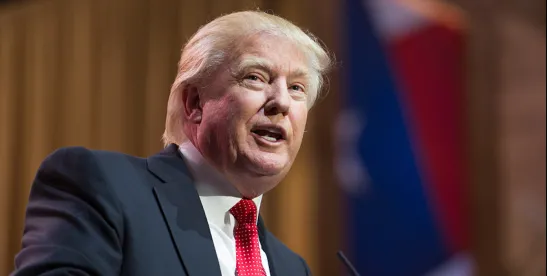On April 9, 2025, President Trump signed an Executive Order (“EO”) titled Modernizing Defense Acquisitions and Spurring Innovation in the Defense Industrial Base. This EO seeks to overhaul many aspects of defense acquisition in order to enhance the military capabilities and streamline the Department of Defense’s (“DOD”) procurement processes. While every presidential administration seeks to streamline and facilitate defense procurement, this EO contains noteworthy approaches that defense contractors should be aware of. For instance, the EO suggests that the government has an appetite for “risk” when it comes to DOD procurements: “We will also modernize the duties and composition of the defense acquisition workforce, as well as incentivize and reward risk-taking and innovation from these personnel.”
Who Does the EO Apply To?
The EO is directed at the DOD and its various branches, including the Army, Navy, and Air Force. But it will potentially have considerable impacts on defense contractors, particularly those who are behind schedule or over budget.
What Are the Key Provisions of the EO?
- The EO is focused on making DOD acquisitions speedier from start to finish. Accordingly, the EO directs the Secretary of Defense to utilize existing authorities to expedite acquisitions and to “require” a general preference for commercial solutions and Other Transactions Authority for “all” DOD contracting actions.
- The EO requires a detailed review of each functional support role within the acquisition workforce to eliminate unnecessary tasks and centralize decision-making.
- The EO requires DOD to establish a Configuration Steering Board to manage risk across all acquisition programs.
- The EO requires that that DOD eliminate 10 existing regulations for every new one proposed.
- The EO requires creating performance evaluation metrics for acquisition workforce members that incentivize them to look first to commercial solutions and adaptive acquisition pathways. The EO also contemplates that acquisition personnel should “in good faith, utilize innovative acquisition authorities and take measured and calculated risks.” The EO also requires assessing whether the acquisition workforce is rightsized.
- The EO requires the establishment of field training teams to provide hands-on guidance and assistance to acquisition personnel in implementing innovative acquisition authorities.
- Most notably for DOD contractors, the EO requires a review of all major defense acquisition programs (“MDAPs”) to identify those that are more than 15 percent behind schedule or more than 15 percent over cost so that such programs can be considered for cancellation.
- In fact, the EO requires Secretary Hegseth to submit a list of all MDAPs contracts, along with information about performance against original and approved government cost estimates, to the Director of the Office of Management and Budget for review within 90 days from the date of the EO (i.e., July 8, 2025).
What Should Defense Contractors Do?
- DOD contractors should be prepared to make a persuasive case as to the value and criticality they deliver, in order to protect their work from possible termination.
- If a DOD contractor’s performance is behind schedule or over budget, the contractor should develop a plan to address these issues promptly to its customer’s satisfaction and with its customer’s buy-in.
- DOD contractors should develop a sophisticated understanding of Other Transactions Authority, the Rapid Capabilities Office, rapid commercial solutions, and other ways by which the government could seek to accelerate the pace of DOD acquisitions.
- Relatedly, to the extent the government begins to view bid protests as a cog in the wheel of speedy defense procurements, DOD contractors should prepare for a future characterized by new or increased barriers to bid protest review. DOD contractors should make sure they are getting the most out of things like Industry Days, Requests for Information, solicitation Q&As, and bringing their very best efforts to final proposal revisions.
This EO represents the start of what may be a significant shift in defense acquisition policy. Blank Rome is continuing to monitor breaking developments in this space.



 />i
/>i
